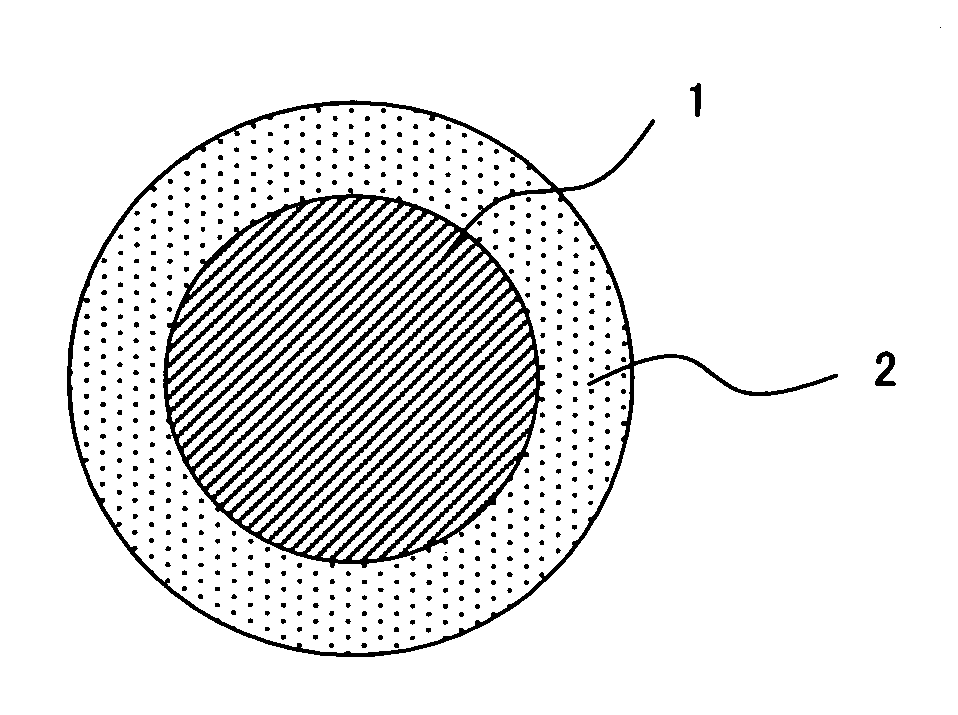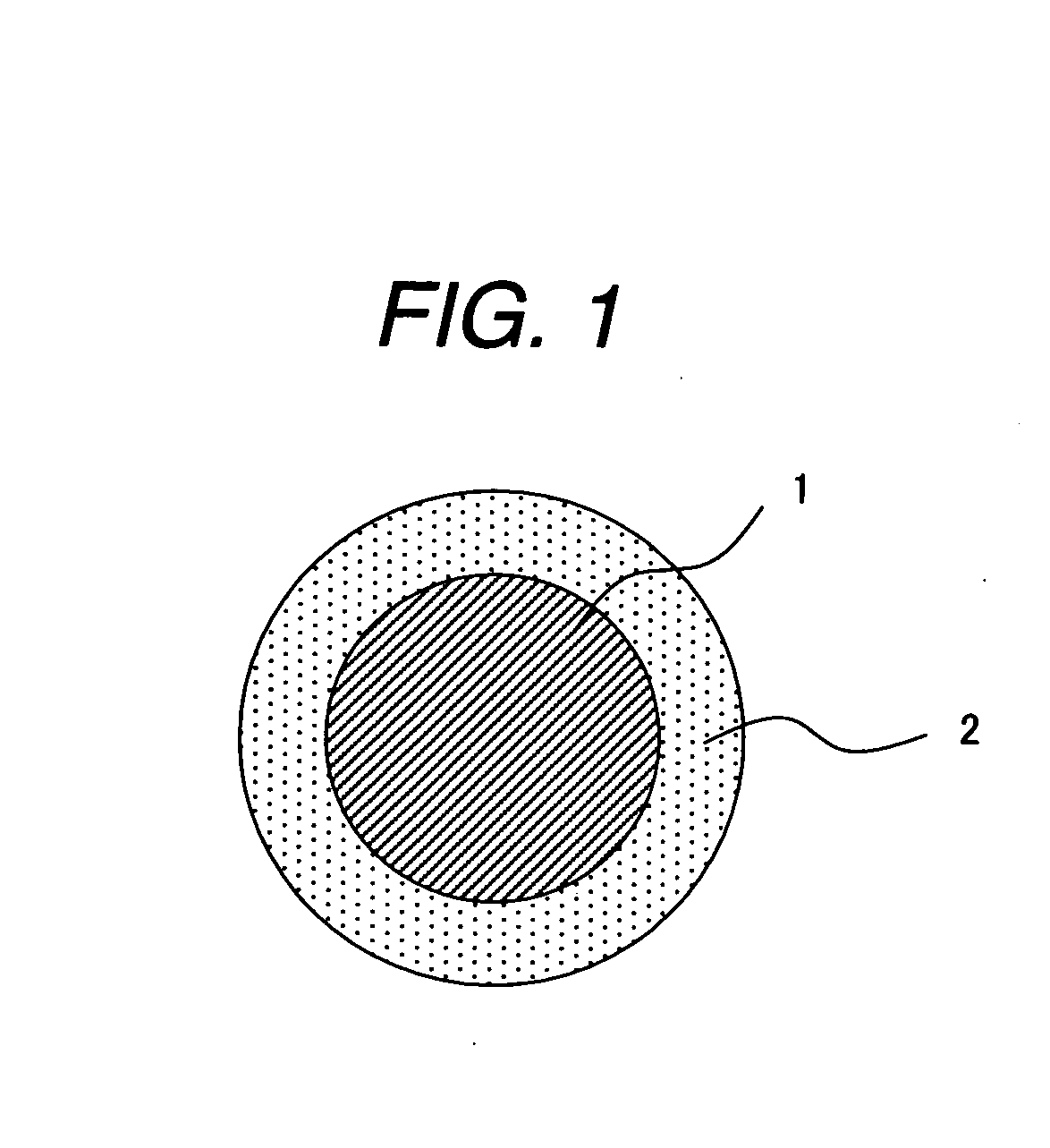Polyamide-imide resin insulating paint and insulation wire using same
- Summary
- Abstract
- Description
- Claims
- Application Information
AI Technical Summary
Benefits of technology
Problems solved by technology
Method used
Image
Examples
example 1
[0053]For Example 1, the following items were used: 231.0 g (0.5 mol) of BIPP (Mw=462) as an aromatic diisocyanate component (A) having three or more benzene rings in the monomer, 125.0 g (0.5 mol) of 4,4′-MDI (Mw=250) as an aromatic diisocyanate component (B) having two or less benzene rings in the monomer, 192.0 g (1.0 mol) of TMA (Mw=192) as an aromatic tricarboxylic anhydride (C), and 1,600 g of NMP as a solvent. They were mixed and synthesized at 140° C., and a polyamide-imide resin insulating paint having reduced viscosity of approximately 0.5 dl / g and resin concentration of approximately 25% by weight was obtained.
example 2
[0054]For Example 2, the following items were used: 242.6 g (0.525 mol) of BIPP as an aromatic diisocyanate component (A) having three or more benzene rings in the monomer, 118.8 g (0.475 mol) of 4,4′-MDI as an aromatic diisocyanate component (B) having two or less benzene rings in the monomer, 182.4 g (0.95 mol) of TMA as an aromatic tricarboxylic anhydride (C), 10.9 g (0.05 mol) of PMDA (Mw=218) as a tetracarboxylic dianhydride component (D), and 1,600 g of NMP as a solvent. They were mixed and synthesized at 140° C., and a polyamide-imide resin insulating paint having reduced viscosity of approximately 0.5 dl / g and resin concentration of approximately 25% by weight was obtained.
example 3
[0055]For Example 3, the following items were used: 338.8 g (0.7 mol) of BIPS (Mw=484) as an aromatic diisocyanate component (A) having three or more benzene rings in the monomer, altogether 75.0 g (0.3 mol) of MDI comprising 62.5 g of 4,4′-MDI (Mw=250) and 12.5 g of 2,4′-MDI (Mw=250) as an aromatic diisocyanate component (B) having two or less benzene rings in the monomer, 115.2 g (0.6 mol) of TMA as an aromatic tricarboxylic anhydride (C), 143.2 g (0.4 mol) of DSDA (Mw=358) as a tetracarboxylic dianhydride component (D), and 2,000 g of NMP as a solvent. They were mixed and synthesized at 140° C., and a polyamide-imide resin insulating paint having reduced viscosity of approximately 0.5 dl / g and resin concentration of approximately 25% by weight was obtained.
PUM
| Property | Measurement | Unit |
|---|---|---|
| Ratio | aaaaa | aaaaa |
Abstract
Description
Claims
Application Information
 Login to View More
Login to View More - R&D
- Intellectual Property
- Life Sciences
- Materials
- Tech Scout
- Unparalleled Data Quality
- Higher Quality Content
- 60% Fewer Hallucinations
Browse by: Latest US Patents, China's latest patents, Technical Efficacy Thesaurus, Application Domain, Technology Topic, Popular Technical Reports.
© 2025 PatSnap. All rights reserved.Legal|Privacy policy|Modern Slavery Act Transparency Statement|Sitemap|About US| Contact US: help@patsnap.com


